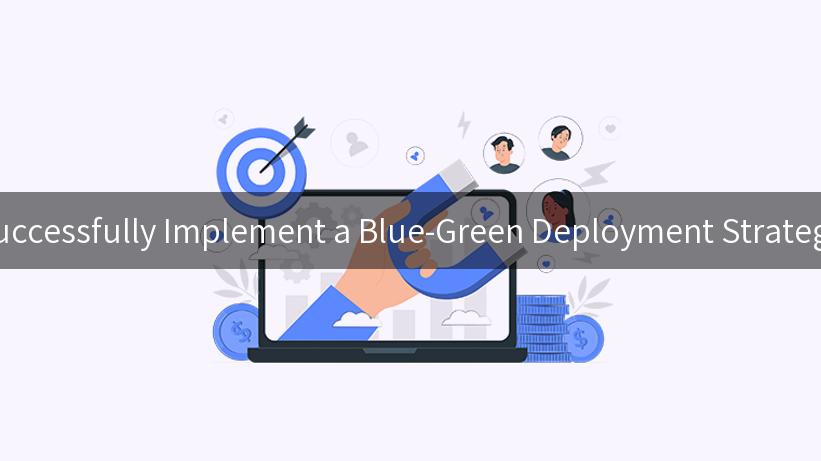
Implementing a blue-green deployment strategy is a critical component for maintaining continuous delivery and ensuring that new changes can be tested and rolled out without affecting the end-user experience. In the context of Google Cloud Platform (GCP), this strategy becomes even more robust by leveraging its scalable infrastructure and powerful tools. This article will guide you through the process of implementing a blue-green deployment strategy on GCP, while also discussing its interplay with AI security, Apache APISIX, API Open Platform, and API runtime statistics.
What is a Blue-Green Deployment?
A blue-green deployment is a technique designed to reduce downtime and risk by running two identical production environments. One environment (let’s say blue) is live, serving all production traffic. Meanwhile, the other environment (green) is idle but fully operational. When it’s time to release a new version of the software, the changes are deployed to the green environment. Once the new version is verified, traffic is switched from blue to green, making green the live environment.
Advantages of Blue-Green Deployment
- Zero Downtime: By shifting traffic between two environments, blue-green deployments ensure zero downtime.
- Easy Rollback: If something goes wrong, you can quickly revert to the last stable version.
- Risk Mitigation: Changes are tested in a production-like environment before going live.
- Improved Testing: Allows for comprehensive testing under production conditions.
Implementing Blue-Green Deployment on GCP
Step 1: Setting Up the GCP Environment
To begin with, you need to set up two identical environments on GCP. This involves creating instances, databases, and any other necessary infrastructure components. Google Kubernetes Engine (GKE) is an excellent choice for managing containerized applications in a blue-green deployment scenario.
# Create a new Kubernetes cluster for the blue environment
gcloud container clusters create blue-cluster --zone us-central1-a
# Create a new Kubernetes cluster for the green environment
gcloud container clusters create green-cluster --zone us-central1-a
Step 2: Deploying the Application
Deploy your application to both the blue and green environments. This involves setting up your application, databases, and any other dependencies.
# A sample Kubernetes deployment configuration
apiVersion: apps/v1
kind: Deployment
metadata:
name: my-application
spec:
replicas: 3
selector:
matchLabels:
app: my-app
template:
metadata:
labels:
app: my-app
spec:
containers:
- name: my-container
image: gcr.io/my-project/my-app:latest
Step 3: Routing Traffic
Use a load balancer to manage traffic between the blue and green environments. GCP provides a flexible load balancing solution that can be configured to route traffic based on your requirements.
# Update the load balancer to direct traffic to the blue environment
gcloud compute backend-services update my-service --global --enable-cdn --backends blue-cluster-backend
Step 4: Monitoring and Testing
Before switching traffic to the green environment, conduct thorough testing. Utilize API runtime statistics to analyze the performance and ensure that the application is running as expected.
AI Security and Blue-Green Deployments
Incorporating AI security measures into your deployment strategy can significantly enhance the safety of your application. AI security tools can help in identifying potential vulnerabilities by analyzing patterns and predicting threats. This proactive approach ensures that security measures are in place before the green environment goes live.
APIPark is a high-performance AI gateway that allows you to securely access the most comprehensive LLM APIs globally on the APIPark platform, including OpenAI, Anthropic, Mistral, Llama2, Google Gemini, and more.Try APIPark now! 👇👇👇
Integrating Apache APISIX
Apache APISIX is a dynamic, real-time, high-performance API gateway that can be integrated into your blue-green deployment strategy. It allows you to manage API traffic, implement security policies, and monitor API performance efficiently.
Example Configuration for Apache APISIX
# A sample APISIX route configuration
routes:
- uri: "/api/v1/*"
upstream:
nodes:
"green-cluster-service:80": 1
plugins:
- name: key-auth
- name: ip-restriction
config:
whitelist:
- "192.168.1.0/24"
Utilizing API Open Platform
An API Open Platform is essential for managing and exposing your APIs securely and efficiently. It provides a centralized platform for monitoring API usage and performance, crucial for making informed decisions during the deployment process.
Monitoring API Runtime Statistics
GCP offers various tools for monitoring API runtime statistics, which can provide valuable insights into the performance and reliability of your application. By analyzing these statistics, you can make data-driven decisions, ensuring that your deployment strategy aligns with business goals.
| Metric |
Description |
| Request Count |
Total number of API requests |
| Error Rate |
Percentage of failed API requests |
| Latency |
Average time to process a request |
| Traffic Distribution |
Percentage of traffic across environments |
Step 5: Switching Traffic
Once testing is complete and you’re confident in the green environment’s stability, switch the traffic from blue to green. This can be done seamlessly using GCP’s load balancing capabilities.
# Update the load balancer to direct traffic to the green environment
gcloud compute backend-services update my-service --global --enable-cdn --backends green-cluster-backend
Step 6: Rollback Strategy
Always have a rollback plan in place. If any issues are detected after switching traffic, you can quickly revert to the blue environment.
Conclusion
Implementing a blue-green deployment strategy on GCP is an effective way to ensure continuous delivery with minimal risk. By leveraging GCP’s robust infrastructure and integrating tools like Apache APISIX and AI security measures, you can enhance the reliability and security of your applications. Remember, monitoring API runtime statistics and using an API Open Platform are crucial for making informed decisions and optimizing your deployment process. This strategy not only supports your current needs but also scales with your future requirements, ensuring long-term success.